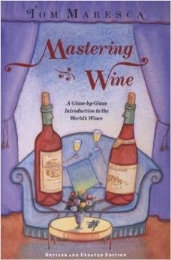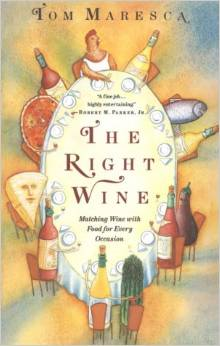Over the years that I’ve been writing about wines, the red wines of Italy have gradually assumed their rightful place among the world’s great wines. It’s pretty generally acknowledged now that Italy has three noble red varieties – Nebbiolo, Sangiovese, and Aglianico – and one great red wine of process, Amarone. There are probably more than that: Italy is a cornucopia of indigenous varieties, but for the moment, those three grapes and Amarone stand as Italy’s contenders for the crown of greatness. Of them all, Aglianico is probably the least known inside and outside Italy, though that is changing steadily as its finest avatar, Taurasi, claims more and more respect with every harvest.
.
It’s almost certainly not news to even casual readers of this blog that I have long admired the Taurasi produced by the Mastroberardino family. For me, every bottle of their Taurasi I open is a time trip, a summary review of the history of Campania’s greatest red wine, and Campanian wine generally, since WW II.
Those wines have a much longer history than that, of course. The vineyards of Campania felix – Campania the blessed – were the Côte d’Or of the Roman Empire, and many an emperor and senator thought as highly of them as Napoleon ever did of Gevrey Chambertin. More than a millennium after the fall of Rome, under the Bourbon kings, the wines of Campania were still famed. It was only with the Bourbon kingdom’s defeat by the Savoy dynasty – an event known to history as the Risorgimento – that the south and its wines went into decline, a process that was for all practical purposes finished off by the phylloxera and WW II.
That’s where the modern history of Aglianico and Taurasi begin. For many years, that history has centered on the work of the Mastroberardino family. Their winery in Atripaldi was the largest and most up-to-date in southern Italy, and the family held the line on quality, resisting both the pressure to make lots of wine fast, and the pressure to plant “international” varieties. Indeed, because of the Mastroberardinos, Campania was saved for native Italian varieties. It now has the smallest acreage of French grapes, and the highest percentage of indigenous varieties, of any Italian wine region. Whether it be Taurasi you’re savoring, or a regional Aglianico, or a Greco or Fiano or Falanghina, it was the Mastroberardinos, under the leadership of the now almost legendary patriarch Antonio, working side by side with his brother Walter, who ultimately made that possible.
.
.
As the family made a success of this enterprise, others took notice. Not only did new investment begin to flow into the Campanian wine sector, but also many growers who had previously been content to sell off their grapes (often to Mastroberardino) began to vinify and bottle under their own names. A rising tide floats all boats, and for a few decades now the tide of profit and prestige has been steadily rising for the wines of Campania. I think that the wines now emerging from Campania felix are the best they have ever been – though, obviously, I am not quite old enough to personally verify that.
I can, however, vouch for the quality of the bottle of Mastro’s 2006 Taurasi Radici that I opened with dinner a few nights ago. 2006 was a good vintage in Campania – a substantial touch above average, let us say, but not a great, off-the-charts vintage to set critics agog. This bottle was not a riserva or a cru: Rather, it was the kind of wine that Mastroberardino regularly produces.
.
.
Would that every winery everywhere worked to such standards! It was gorgeous. Ravishing. Velvet in the mouth, with scents and tastes of dark berries and forest undergrowth, with lovely minerality, and an exquisite balance of acids and tannins and alcohol, and still an underlying freshness that indicated it would have had years of life before it if I hadn’t greedily drunk it now.
Call it infanticide: I don’t regret a single droplet of it. Who knows how many amphorae of their beloved Falernum the winos of the classical ages drank too young? Posterity hasn’t indicted them, and I can hope to get off with as little pain, and as much – or more – pleasure.







































